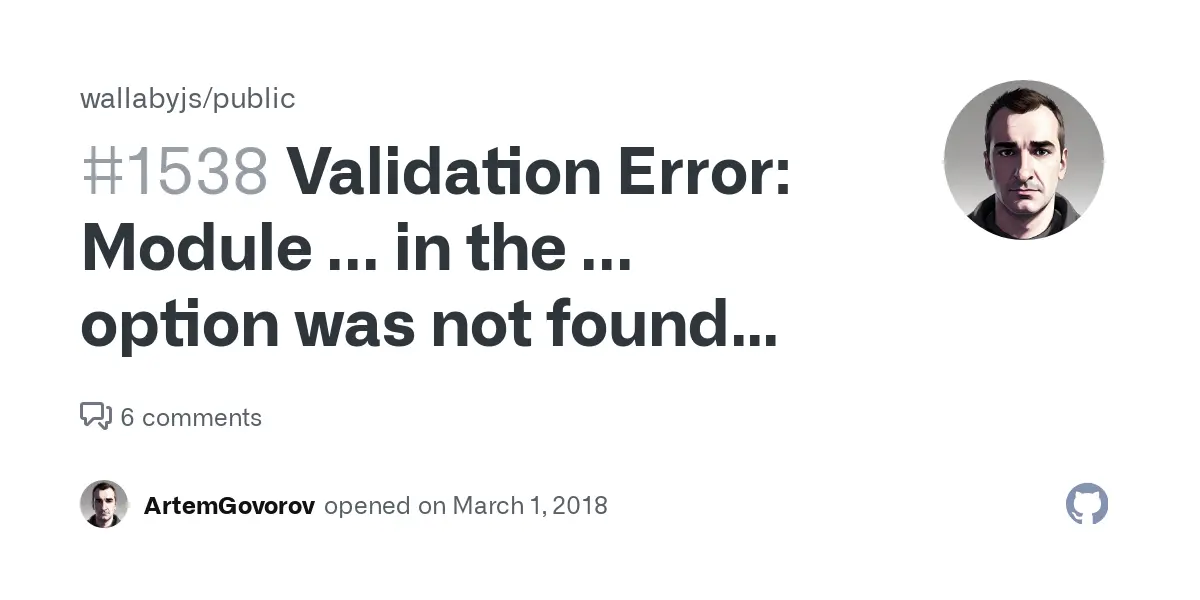One common issue developers encounter is the “Jest module jest-jasmine2 in the testrunner option was not found” error. This issue can be frustrating, especially when you’re deep into your testing process and things suddenly break. But fear not! In this guide, we’ll dive deep into the root cause of the problem, explore potential fixes, and walk through step-by-step solutions.
Software testing is an essential aspect of modern web and mobile development, ensuring that applications run correctly and meet expected behavior. One of the popular testing frameworks is Jest, widely used in the JavaScript and React ecosystems for its simplicity, fast performance, and powerful features. However, like any software tool, Jest can sometimes throw errors, halting development progress.
Understanding the Problem: What Does the Error Mean?

The error message “jest module jest-jasmine2 in the testrunner option was not found” is essentially telling you that Jest is trying to locate the jest-jasmine2 module but cannot find it. The jest-jasmine2 module is a test runner built on Jasmine, which was Jest’s default test runner in earlier versions.
Over time, Jest has evolved, and with recent updates, some of the older modules, such as jest-jasmine2, are no longer included by default or may require manual installation in specific configurations. If you see this error, it’s a sign that Jest is expecting a module that either isn’t installed or has been deprecated, leading to confusion for developers upgrading or maintaining older projects.
Common Scenarios That Trigger the Error
Before we jump into fixing the problem, it’s essential to understand the contexts in which this error might appear. Some common triggers include:
- Upgrading Jest: If you recently upgraded to a new version of Jest, you might encounter this error because the test runner configuration is outdated, expecting the now-deprecated
jest-jasmine2module. - Incorrect Configuration: When Jest is misconfigured in your
jest.config.jsor package.json file, it might try to usejest-jasmine2when another test runner should be in place. - Custom Test Runner Setup: You may have previously set up a custom test runner, which is no longer supported in the latest version of Jest.
How to Fix the Jest Module jest-jasmine2 Error
Now that we know what’s causing the issue, let’s go over the steps to fix it. Depending on your project’s setup and specific circumstances, the solution can vary, but the following troubleshooting steps should cover most scenarios.
Step 1: Update Your Jest Configuration
The first step to resolving this issue is to check your Jest configuration files for any references to jest-jasmine2. This could be in your jest.config.js file or your package.json file under the jest key.
- Open Your Jest Configuration File: Check for any instances of the
jest-jasmine2the module being explicitly referenced in thetestRunneroption.
javascriptCopy code// jest.config.js
module.exports = {
testRunner: "jest-jasmine2", // Look for this line
};
If you find this line, you’ll want to either remove it or replace it with Jest’s default test runner. As of Jest version 27 and above, the default runner is jest-circus, which offers better performance and more flexibility than the old Jasmine-based runner.
- Update Your Test Runner:
javascriptCopy code// jest.config.js
module.exports = {
testRunner: "jest-circus/runner", // Switch to jest-circus
};
By updating the test runner to jest-circus, you’ll ensure that your project uses the latest and recommended test runner in Jest, avoiding the need for deprecated jest-jasmine2 module.
Step 2: Install Missing Modules
If your project explicitly requires jest-jasmine2 (perhaps due to specific tests that depend on Jasmine behavior), you may need to install the module manually.
- Run the Following Command:
bashCopy codenpm install jest-jasmine2 --save-dev
This will install the jest-jasmine2 module locally to your project, allowing Jest to find it when running your tests.
Step 3: Check for Deprecations and Updates
As mentioned, Jest is constantly evolving, and some features or configurations from older versions might no longer be available. If updating your test runner and installing missing modules doesn’t resolve the issue, it may be worth checking the Jest release notes or GitHub issues for any known deprecations or updates regarding jest-jasmine2.
The Jest community is active, and the development team regularly pushes updates. By staying informed, you can ensure that your project remains compatible with the latest version of Jest.
Step 4: Clear Jest Cache
Sometimes, the error may persist due to cached data from an older configuration. Jest maintains a cache to improve performance, but occasionally, this cache can cause issues when upgrading versions or switching configurations.
- Clear the Jest Cache with This Command:
bashCopy codejest --clearCache
This command clears all cached data, ensuring that Jest is working with the latest configuration settings and modules.
Step 5: Verify Your Node Modules
It’s also possible that the error is caused by corrupted or missing node modules. You can regenerate your node_modules folder by running the following commands:
- Delete the Existing Node Modules:
bashCopy coderm -rf node_modules
- Reinstall Dependencies:
bashCopy codenpm install
This will ensure that all your dependencies, including Jest and its related modules, are installed correctly.
Step 6: Downgrade Jest (If Necessary)
If none of the previous steps resolve the issue, and you are in a situation where upgrading Jest is not an option (e.g., due to compatibility with other dependencies), you might consider downgrading Jest to an earlier version that still includes support for jest-jasmine2.
- To Install an Older Version of Jest:
bashCopy codenpm install jest@26 --save-dev
By downgrading to Jest version 26 or earlier, you can continue to use the Jasmine test runner without encountering the “jest module jest-jasmine2 in the testrunner option was not found” error.
Best Practices for Managing Jest Configurations

After resolving the immediate issue, it’s a good idea to review your testing setup and ensure that you are following best practices to prevent future problems. Here are some tips:
Regularly Update Jest and Dependencies
Keeping your Jest installation and its related dependencies up to date ensures that you benefit from the latest features, bug fixes, and performance improvements. Make it a habit to regularly check for updates and read through the release notes.
- Check for Updates Using npm:
bashCopy codenpm outdated
This command will show you a list of outdated dependencies, including Jest, so you can decide when to upgrade.
Use Default Configurations Whenever Possible
Jest’s default configurations are designed to work well for most projects. Customizing the test runner, in particular, should be done with caution. Unless your project has specific needs that require a custom test runner, sticking with the default (jest-circus) will help avoid issues like the one discussed here.
Leverage Jest Plugins and Extensions
If you find that Jest’s built-in capabilities aren’t enough for your testing needs, consider using plugins or extensions that enhance its functionality without requiring major configuration changes. The Jest ecosystem includes a wide range of tools, such as jest-extended for additional matchers or jest-watch-typeahead for an improved test-running experience.
More to explore What is kz43x9nnjm65?
Why Does Jest Default to jest-circus?
With all this talk about test runners, you might wonder why Jest moved away from Jasmine and switched to jest-circus as the default runner. There are a few key reasons for this:
- Performance:
jest-circusoffers better performance, particularly in large projects with numerous tests. It’s designed to handle asynchronous code more efficiently, leading to faster test execution. - Better Control:
jest-circusgives developers more fine-grained control over the testing process, including improved error handling and more advanced testing hooks. - Future-Proofing: As Jest continues to evolve,
jest-circuswill be the basis for new features and improvements, ensuring long-term compatibility with the broader JavaScript ecosystem.
For more details on the differences between jest-circus and jest-jasmine2, check out Jest’s official documentation.
Conclusion
Encountering the “jest module jest-jasmine2 in the testrunner option was not found” error can be frustrating, but with the right approach, it’s entirely fixable. By updating your test runner, ensuring that all necessary modules are installed, and following best practices for Jest configuration, you can get your tests running smoothly again.
As always, staying informed about changes in your development tools and regularly updating your dependencies will help you avoid these kinds of issues in the future. Happy testing!





